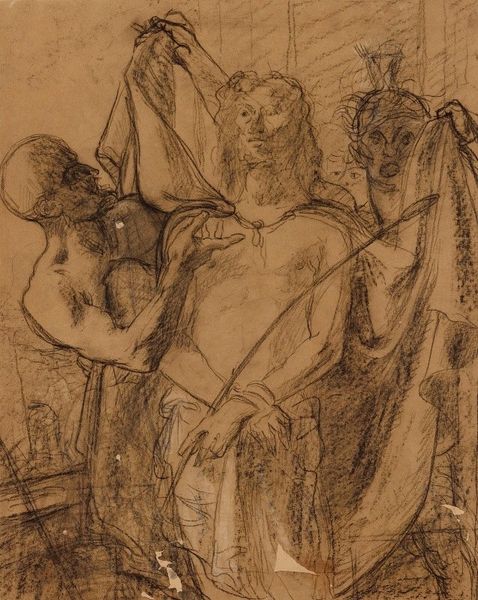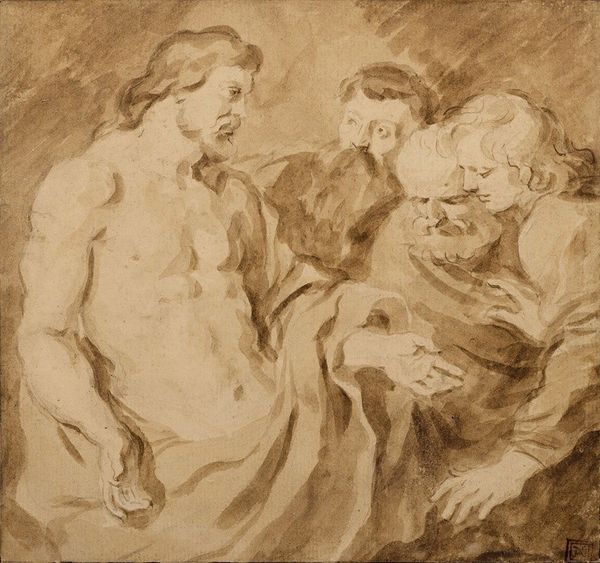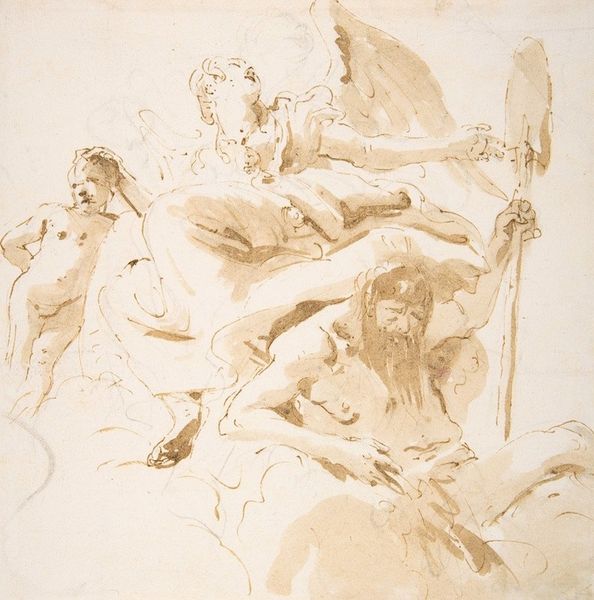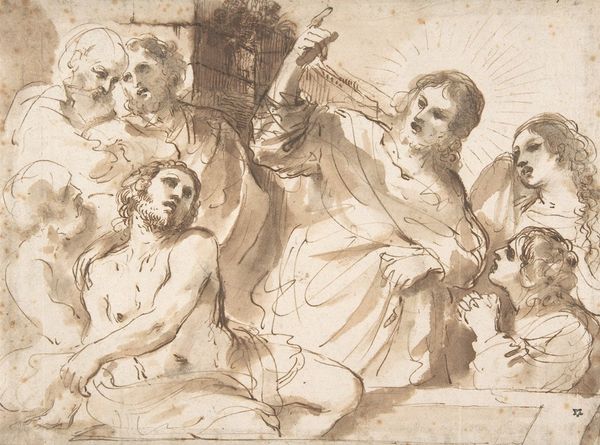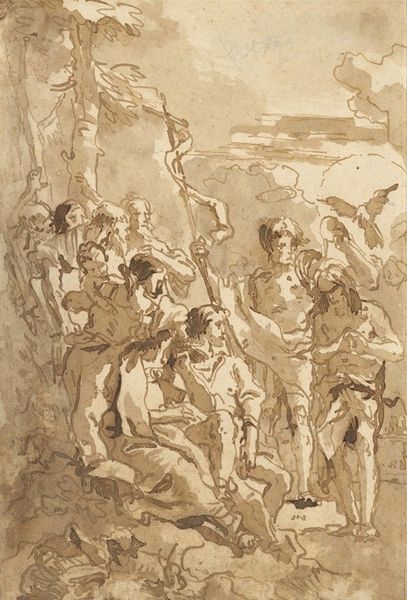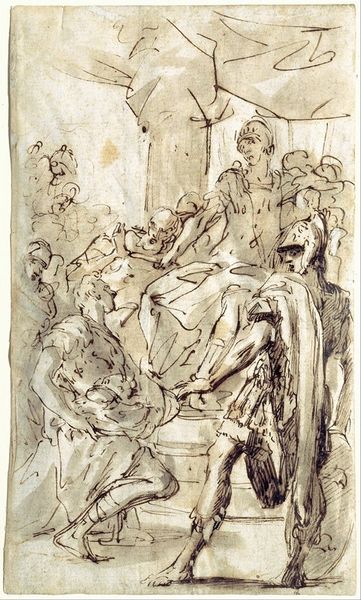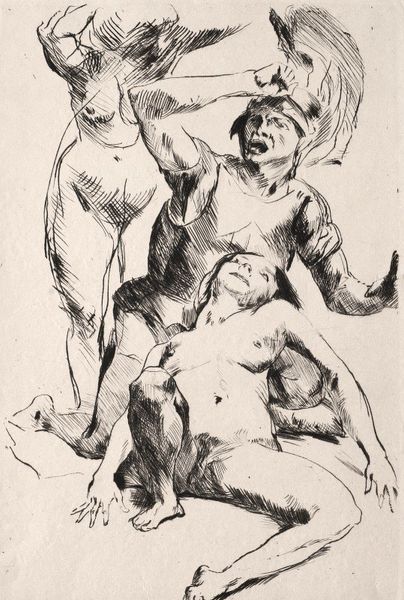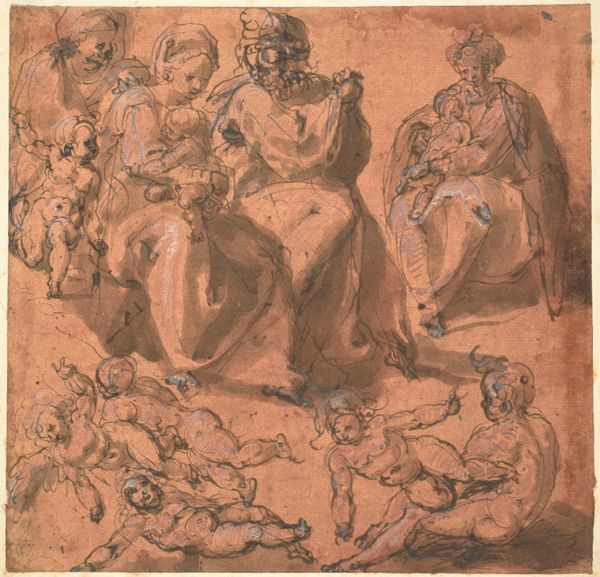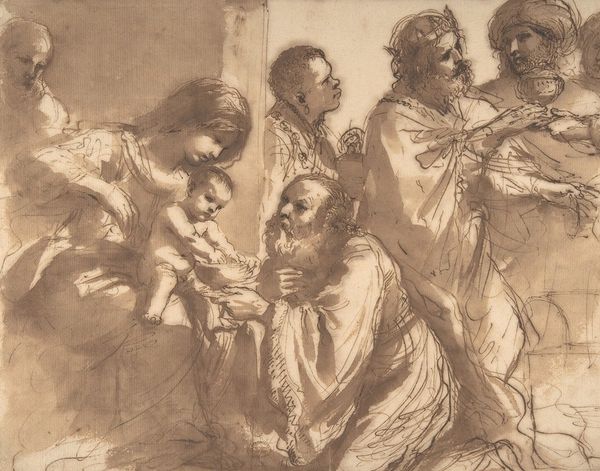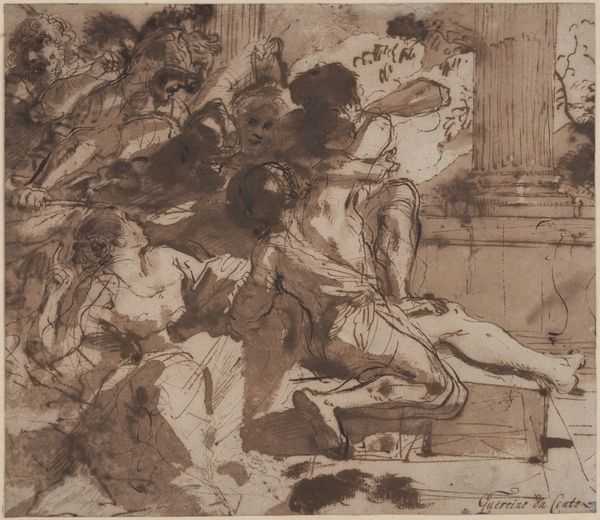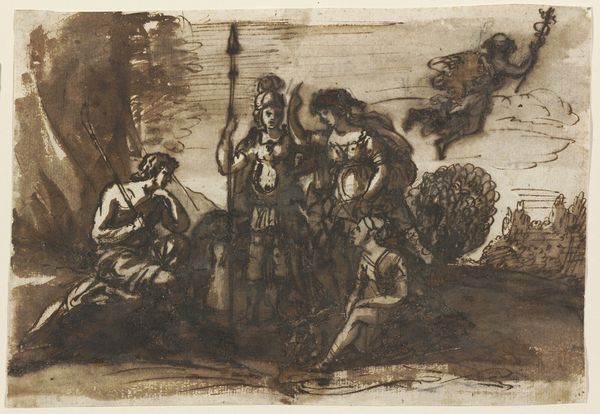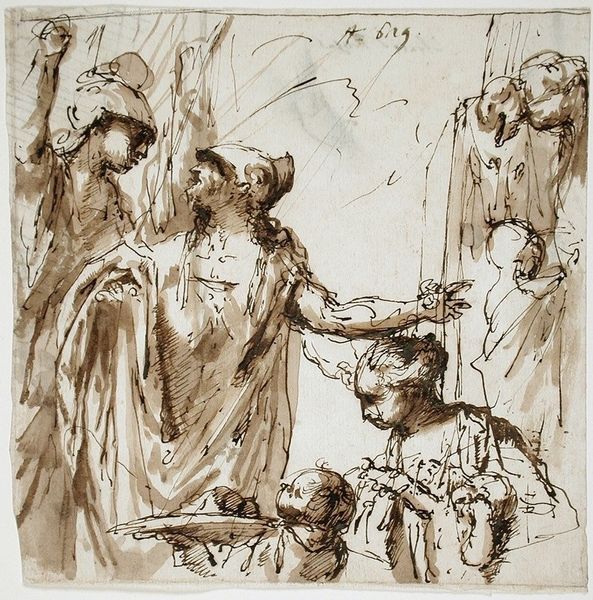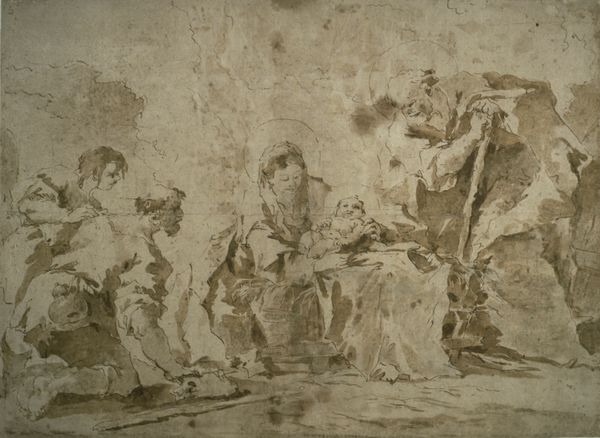
drawing, charcoal
#
portrait
#
drawing
#
charcoal drawing
#
portrait drawing
#
charcoal
#
history-painting
#
academic-art
Copyright: Public Domain: Artvee
Jan Matejko sketched "Maćko Borkowic" in 1875 using sepia ink. It captures the moment before Borkowic's execution, laden with symbols of justice and mortality. The executioner's axe looms large, an ancient emblem of power and fate. This instrument, used to enact punishment, echoes through time, from Roman tribunals to medieval justice. The vessel held by the executioner has a reference to Pontius Pilate, in the New Testament, who washes his hands, a symbol of a desire to cleanse oneself of guilt or responsibility. Consider the stoic posture of Borkowic. This echoes classical heroes facing their demise, reflecting a deep cultural memory of sacrifice. Such images tap into our collective subconscious, stirring primal fears and a fascination with mortality. The act of judgement itself is a recurring motif, reappearing in art across cultures and eras. Through Matejko's sketch, we witness a timeless drama, where symbols of power, justice, and the human condition intertwine. These symbols resonate with a non-linear, cyclical progression, resurfacing and evolving across historical contexts.
Comments
No comments
Be the first to comment and join the conversation on the ultimate creative platform.
